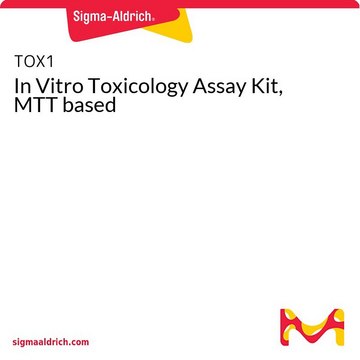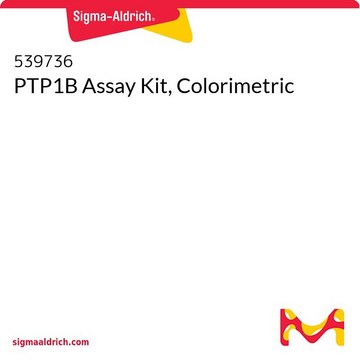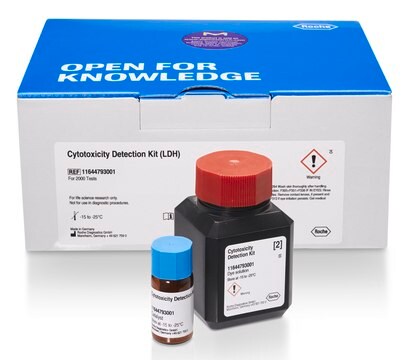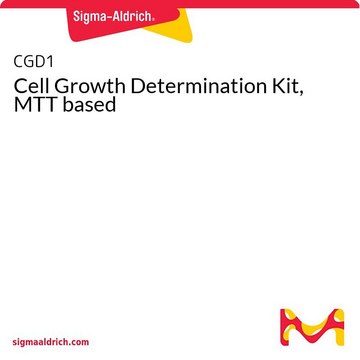MAK536
Cytotoxicity Assay Kit
sufficient for 100 assays (bioluminescent)
Sign Into View Organizational & Contract Pricing
All Photos(1)
About This Item
UNSPSC Code:
12161503
NACRES:
NA.84
Recommended Products
Quality Level
application(s)
pharmaceutical
detection method
bioluminescent
relevant disease(s)
cancer
shipped in
wet ice
storage temp.
−20°C
Related Categories
General description
Adenosine 5′-triphosphate (ATP) is the chemical energy for cellular metabolism and is often referred to as “energy currency" of the cell. ATP is produced only in living cells during photosynthesis and cellular respiration and consumed in cellular processes including biosynthetic reactions, motility and cell division. It is a key indicator of cellular activity and has been utilized as a measure of cell viability and cytotoxicity in research and drug discovery.
Features and Benefits
- As low as 50 cells can be quantified.
- Compatible with high-throughput handling systems.
- No wash and reagent transfer steps are involved.
Suitability
The kit is suitable for:
- Cell proliferation: effects of cytokines, growth factor, nutrients.
- Cytotoxicity and apoptosis: evaluation of toxic compounds, anti-cancer antibodies, toxins, environmental pollutants etc.
- Drug discovery: high-throughput screening for anticancer drugs.
Principle
The Cytotoxicity Assay Kit provides a rapid method to measure intracellular ATP, cell viability, and cytotoxicity. The single working reagent lyses cells to release ATP, which, in the presence of luciferase, immediately reacts with the substrate D-luciferin to produce light. The light intensity is a direct measure of intracellular ATP concentration and hence number of living cells.
Signal Word
Warning
Hazard Statements
Precautionary Statements
Hazard Classifications
Aquatic Chronic 3 - Skin Sens. 1
Storage Class Code
10 - Combustible liquids
WGK
WGK 3
Certificates of Analysis (COA)
Search for Certificates of Analysis (COA) by entering the products Lot/Batch Number. Lot and Batch Numbers can be found on a product’s label following the words ‘Lot’ or ‘Batch’.
Already Own This Product?
Find documentation for the products that you have recently purchased in the Document Library.
Our team of scientists has experience in all areas of research including Life Science, Material Science, Chemical Synthesis, Chromatography, Analytical and many others.
Contact Technical Service








